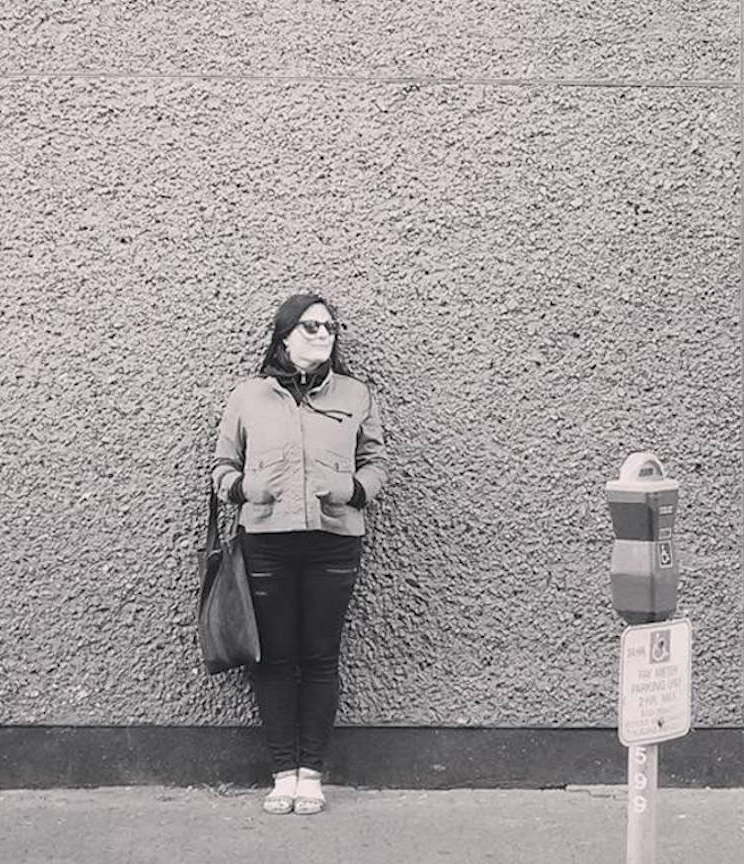 PC/Cp participants gather outside on Lekwungen Territory for
PC/Cp participants gather outside on Lekwungen Territory for
Jamelie Hassan's Sunrise Breakfast, part of the Deconstructing
Comfort exhibition at Open Space. Photo credit: Doug Jarvis.
The Intersectionality in the Arts (3) Feminism(s) 2017 session was an opportunity to gain greater understanding into the range of ways that contemporary feminism is understood and practiced. Led alongside Anoushka Ratnarajah, we opened up the session to all the participants, each sharing how we came to feminism, or are in process of coming to feminism. For some, this was an introduction to the conversation; for others, a lifelong affiliation. Many of us identified as feminist and/or understood our practices to be feminist, yet this did not necessarily correlate to the development of a feminist perspective founded in traditional western education models or an in-depth knowledge of feminist theory or history. The gathering reiterated the fluidity of feminist engagement and the nuanced roles it plays across praxes. In the arts, we are all well aware of the statistics. Exhibitions, performances, publications, events, and labour continue to represent predominantly white hetero-patriarchal perspectives, despite the decades of work that has been, and continues to be done. Particularly palpable in a session where all but one of the participants were women, the question of responsibility was made clear and the role of gendered involvement in the practice of feminism was a prevalent topic throughout the session conversation—#whereareallthemenat—combined with the profound importance of intersectionality. Due attention was given to the Murdered and Missing Indigenous Women and Girls, and subsequently to the levels of involvement and interest by cis men in the initiatives against gendered and racialized violence. There is an urgent and pervasive need to look closely at who is present in the conversation.
The mainstream dominance of western feminist theory and pop-culture and capitalist interpretations has dissuaded feminism’s potential. The discernable discomfort with—and even rejection of—the term “feminism” amongst the session participants results from such associations with specifically white women’s issues in the absence of a genuine intersectional discourse. A notable point was raised in relation to the fissure of feminist practice from feminist theory. The academic framework, or stronghold, of feminist discourse comes into play here as well, in terms of the location and positionality of feminism’s theoretical development, by contrast to work being done on the ground and beyond the institutional reach.
Why should feminism matter? A quote from cheyanne turions feels particularly relevant here: “It is important to acknowledge that feminism is about more than ending sexism—it’s also about abolishing interconnected systems of oppression that affect different people in different ways, and in a Canadian context this importantly means working to acknowledge and then abolish colonial forms of dispossession.” Moving forward, we must listen—with seriousness—to the ways in which the colonial hetero-patriarchal system is impacting individuals and communities, and to take these effects as points of action. To make space that allows people to be and feel provided for and safe as themselves, that does not simply replace males with females in the same patriarchal framework, but works to establish an entirely different societal system of organization.

Toby Lawrence is a curator and writer based between Kelowna and Gabriola Island, in the territories of the Syilx and Snuneymuxw peoples. She has held curatorial and programming positions with the Vancouver Art Gallery, Art Gallery of Greater Victoria, Nanaimo Art Gallery, and Studio 111, an experimental arts laboratory in Kelowna. She holds an MA in Art History from UBC and is currently working toward a PhD focused on curatorial practice at UBC Okanagan.